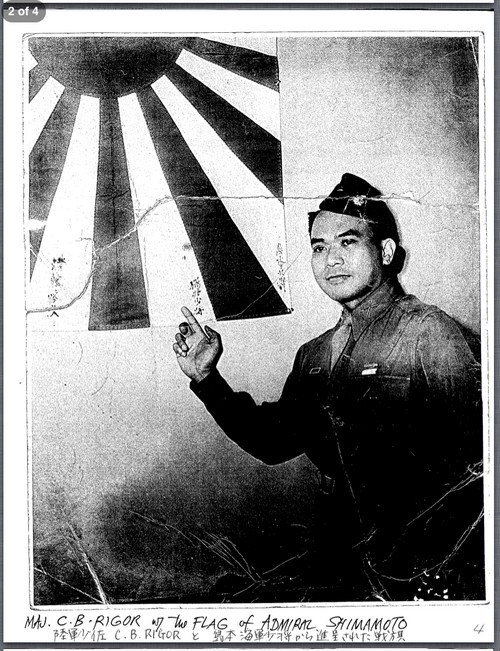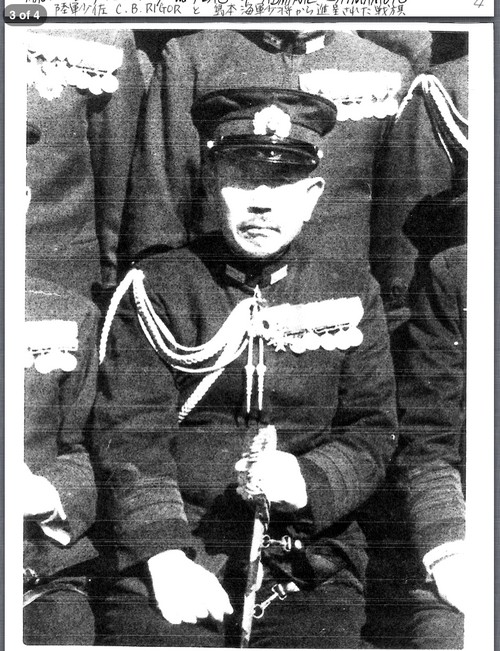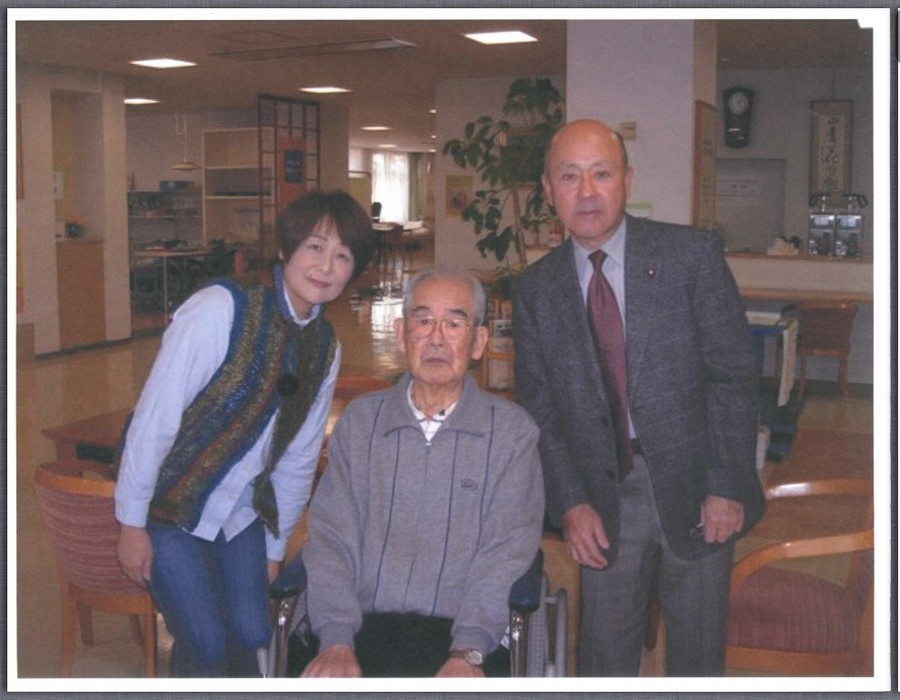

A Son’s Story
Fate whispered to the warrior:
“You cannot withstand the storm…”
The warrior whispered back:
“I am the storm.”
-Author unknown
My father’s contemporaries tell me he was an
authentic war hero---with emphasis on the word ‘authentic.’ Of course this makes
the family genuinely and silently proud. Being a war history buff, I often
wonder why there are lesser stories told about victories featuring Filipino
soldiers during the last world war. Were they not key players who belonged to
the triumphant Allied Forces of World War II in the Pacific? Except for the
overplayed MacArthur U-turn to the archipelago, military historians seem to
focus more on defeats and infamy like Bataan, Corregidor, and the Death March.
We commemorate these woeful events of subjugation every year but rarely remember
those where the Filipino soldier had dutifully helped defeat the enemy.
In one crucial and bloody military operation in the
final months of World War II, my father had led three all-Filipino battalions of
the 121st Infantry, USAFIP-NL. Reinforced by gritty bolomen from the Mountain
Province, they assaulted Bessang Pass in the rugged mountains of North Luzon. It
was Dad’s unit that broke through a formidable enemy defense line entrenched
within the mountainous terrain of the Cordilleras. That hard-fought battle that
lasted several months led to the surrender of the feared Tiger of Malaya,
General Tomoyuki Yamashita, and other high-ranking Japanese Imperial Army and
Naval flag officers who had regrouped in the Philippines from nearby Asian
cities. They had hoped that with the fabled Tiger in command, they could create
a formidable stand. Among them was a ranking Admiral, the Vice-Chief of Staff of
the Japanese Imperial Navy, who had helped maneuver the submarine attack on
Pearl Harbor in 1941.
My father, “Daddy” to us his nine children and to our
mother Erlinda, was not much of a talker. He was the silent,
self-effacing-to-a-fault type. In close circles of friends, he was known as an
upright, ram-rod-honest soldier-scholar, a poet, writer, and an ROTC reservist
from the University of the Philippines. Close friends and associates called him
“CB” or Condring. In his writings, he had paid homage to poets E.E. Cummings and
Jose Garcia Villa when he studied philosophy and letters as a government scholar
at the Columbia U in New York following his wartime service. He took up courses
there with the then General Dwight (Ike) Eisenhower. After a three-year stint in
the U.S., he returned to the Philippines to help establish the English
Department of what is now a national institution, the Philippine Military
Academy (PMA) in Loakan, Baguio.
Throughout his forty-six abbreviated years on this
planet, he rarely spoke about his wartime exploits. But his comrades-in-arms had
recognized his dedication to the cause of the veterans when he was unanimously
chosen to be the first secretary general of what is now the Veterans Federation
of the Philippines (VFP), an organization that he had helped to organize so that
there would be advocacy and substance to the peacetime campaigns of the
forgotten Filipino soldier.
His comrades-in-arms (who later became distinguished
personages) like Fred Ruiz Castro, Macario Peralta, Carmelo Z. Barbero, Pilar
Normandy, Ernesto Rodriguez Jr., Francisco Bautista, Roberto Reyes, Eulogio
Balao, Simeon Valdez, Cris De Vera, Jose Crisol, Nicanor Jimenez, Jose Banzon,
Arnulfo Banez, Amador Daguio, Pio Escobar…to name a few… Dad’s peers who would
frequent the quarters where the family had lived at various military camps. They
would recount what he had accomplished that fateful day in June of 1944 when the
rising morning sun was hidden by clouds in the rugged ridges of Bessang Pass.
What Dad had dubbed in his post-war writings as “The
Battle of the Clouds” is said to have marked the official end of hostilities in
the Philippines after General Yamashita and his staff were escorted down the
foot trails of the Cordilleras to Camp Spencer in La Union. From there the
legendary Japanese General was taken to Manila for his celebrated military trial
and eventual execution as a war criminal in Los Banos, Laguna.
Dad, in his journal writings, pointed to the battle
in Bessang Pass as an “engagement of redemption,” coming full circle after “the
shame and ignominy that was Bataan.” His colorful lines about the battle at
Bessang would later be used rather extensively by then Senator Ferdinand Marcos
when he campaigned for the highest office of the land in 1966. A wordsmith at
heart, Daddy had unwittingly laid out through his after-battle reports and
writings a clear path for the ambitious Senator Marcos to tread. The politician
from Ilocos Norte and his apple-polishers created in the process the impression
that the dreaded General Yamashita had personally surrendered to him---when in
reality he was safely tucked away as staff in an obscure military personnel
office. He had supposedly feigned sickness 85 kilometers away from the site of
the bloody battle. Asked by one of Dad’s officers why he was not in the
frontlines that day, the then Maj. Marcos, who was in bed at Camp Spencer’s
dispensary, replied wryly, “I am not in the mood for heroics.”
Barely twenty-three years later, after stints as a
congressman of Ilocos Norte and later as a senator, Ferdinand Marcos would
create a controversy because of a film story and campaign line, “For every tear,
a victory,” lines so utterly familiar to what Dad had written about the triumph
at Bessang Pass. Shortly after Dad suddenly died in May of 1960 at the age of 46
due to asthma complications (and because of incompetence of medical staffers at
the V. Luna Medical Center in Quezon City), his writings, files, records and
journals vanished. According to my mother, she had turned them over to some of
Dad’s comrades-in-arms to be used in recording the USAPIP-NL’s role in World War
II. As if the trauma of Dad’s passing away was not enough to his still-in-shock
family, a devastating storm and flood two weeks after he was laid to rest nearly
washed away the brand new home that he had lovingly built in Little Baguio, San
Juan. Wet, torn and muddied, all of his library books, records, journals and
files were damaged beyond repair. Whatever remained in his library about “The
Battle of the Clouds” were most likely lost forever. Only in the writings,
recollections and testimonies of those who had fought with him would remain.
Only the tamper-free World War II files of the United States military would now
reflect the names and the recorded roles of Filipino fighting men in the
benighted peninsula of Bataan, the rock-like defense that was Corregidor, the
infamy of the Death March and then the shining valor, redemption and gallantry
that was Bessang Pass. But many still wonder to this day if envy and prejudice
that lurked in the hearts of those who had recorded and revisited historic
military episodes would diminish the glory of the Filipino soldiers and
guerillas who fought a war that was hardly theirs.
The book written by a communications officer and dear
friend of Daddy, Ernesto Rodriguez Jr. (founder and first president of the
College Editors’ Guild (CEG), a prestigious organization of young Filipino
academics) entitled “The Bad Guerillas of Northern Luzon,” is considered by
historians as a factual and priceless chronicle of the complicated military
campaign in that region during the war. The book recounts the day-to-day pursuit
of Yamashita’s retreating army by Filipino soldiers who were under the
telegraphic command of Col. Russel Volkmann of the United States Armed Forces in
the Philippines-North Luzon (USAFIP-NL). The desperate Japanese Imperial Army
had ravaged Manila and parts of Central Luzon as they retreated northward.
In a rare storytelling episode on our way to Dolores,
Abra one summer vacation in the early 50s, when we kids were still in grades
school, Dad parked the car on a roadside and pointed to the mountain ranges in
the distance where he had fought side-by-side with brave Filipino soldiers as
they pursued well-entrenched Japanese forces. He said that many of those who
were fighting against his troops were young Korean boys not more than 15 years
old. Frightened, hungry and sick, the young Koreans were prisoners of war (POWs)
who were forced by Yamashita to wear ill-fitting combat uniforms and to fight
the Filipinos. Many of them ran from their battle trenches to surrender to Dad’s
men. #
Epilogue
About two decades after Dad was buried at
the Libingan ng Mga Bayani in Fort Bonifacio, I met several of his old
comrades-in-arms who had fought side-by-side with him in Bessang Pass. Each one
had expressed dismay over an epic battle that could have been the most profound
glory hour of the Filipino soldier in WW II if it were ever made public. The
surrender of the highest-ranking, most feared Japanese Imperial Army General to
a gritty battalion of Filipino military officers supported only by a band of
barefoot and spunky Ilocano Bolomen from the provinces of Abra, Ilocos Sur and
the Mountain Province was all but forgotten. Why? Because the American officers
behind the battle lines—far away in La Union----upon learning of the
breakthrough against Yamasita’s almost-impregnable defense lines by the
USAPI-NL’s 121st Bn. were in disbelief. They ordered the Filipino detachment at
Bessang Pass “not to announce anything until further orders.” Two days later,
only after the Americans had arrived in Bessang Pass, that the announcement of
Yamashita’s surrender was bannered to the whole world. Even today, Dad’s aging
comrades can only shake their heads in silent anger. One outspoken Filipino
officer commented: “Well…the ‘I Shall Return’ PR blitzkrieg and full-bore
propaganda campaign had to have a glorious spin to it and Bessang Pass was a
sure fit.” (The other surprising spin to the historic surrender of the Tiger of
Malaya was that he reportedly refused to emerge from his cave in Bessang unless
there were American officers to receive him---for fear that the Filipinos would
kill him right there. This was pure rubbish, Dad and his comrades would declare.
For his war crimes, Yamashita was summarily executed by the Americans in Los
Banos anyway.) And so, countless Filipino warriors remain unheralded, forgotten
and buried under the WWII radar screen of valor and sacrifice. So like that
haunting song of patriotic servitude, Dad and his gallant comrades “…will never
die, they’ll just fade away…” Burning in the hearts of warriors who fought for
freedom and who revere truth is a conviction that redemption always comes in the
end game. #
Conrado (Sluggo) Rigor, Jr. / UPD60 / Seattle, WA /
Summer 2004
About the Author
Conrado N. Rigor, Jr. is executive director of a
non-profit human services organization (www.idicseniorcenter.org) based in
Seattle. Sluggo is a community journalist who also served as information attache in
Seattle’s Philippine Consulate General in the late 1980s. He is the eldest son
of a WWII veteran who had figured in the historic Battle of Bessang Pass where
General Yamashita and his invaders finally surrendered to end the Pacific War.
His email:
sluggorigor@gmail.com.
===============================================================================================================================================================================================================
Dear Brod Norms,
I hope you are able to download items here.
My Dad posing before the historic flag that was surrendered to him by Admiral Kyoguro Shimamoto who led the sneak attack of submarines on Pearl Harbor.
The flag flew on Admiral Shimamoto's lead submarine after a successful mission on US ships. The
Admiral later surrendered at Bessang Pass together with the feared Tiger of
Malaysia, General Tomoyuki Yamashita. It was my Dad's unit, the USAFIL-NL 121st
Inf., 3rd Btln., reinforced by gritty bolomen from the Mountain Province, that
scaled the backwall of the Pass. Yamashita, a brilliant military strategist, had
dug into Bessang Pass as the enemy's last stand in the Philippines.
I tried contacting his family in Osaka to try to return the flag that is now in
my family's possession.
Sluggo, 9/06/18
Picture 1 - Then Maj. C.B. Rigor points to the flag of Japanese Admiral Shimamoto.
Picture 2 - Admiral Kyoguro Shimamoto led the
submarine sneak attack on Pearl Harbor and later surrendered his flagship's
symbol to Maj. C.B. Rigor after the decisive Battle of Bessang Pass. This final and last major engagement lasted for five
months and led to the capture of the infamous Tiger of Malaya, General Tomoyuki
Yamashita, following the breakthrough of the once-impregnable enemy defenses by
the all-Filipino 3rd Batln., 121st Infantry of the USAFIP-North Luzon.
Picture 3 -The family of Admiral Shimamoto now living
in Osaka, Japan. On the wheelchair is the Admiral's 81-year old son and the lady
is a granddaughter. (We, the Rigors, connected with the family after a year-long
search to ask if they wanted the flag returned to them. What followed next is
another post-war story of human interest).



===============================================================================================================================================================================================================
Postscript, by Norman Bituin
1) As I told Sluggo, the Rigor house in Little Baguio, San Juan is close to the hearts (and butts!!) of the UPD'65 Black Saints being the site of our 1st and 3rd sessions. On our first session, on the white t-shirt we wore was written in pentel pen a number based on our last names alphabetically. I remember my number was "23" (Bituin). Near me was number "25" (Cabanatan). Elmor Villanueva said he was number "120". We finished with 29 new brods, the Black Saints, on Dec. 9, 1965.
2) I did some research on Bessang Pass on the internet. The United States Army concluded as "fraudulent" and "absurd" Ferdinand Marcos' claims on his war stories. The Filipino soldiers from the Third Battalion of the 121st Infantry, USAFIP-NL, were led by the real hero, Maj. Conrado Rigor, Sr., to whom Admiral Shimamoto surrendered the Japanese flag. If interested, see links below.
https://memebuster.net/marcos-stole-another-soldiers-war-story-in-bessang-pass/
https://kami.com.ph/41567-marcos-hero-bessang-pass-steal-war-veteran-victory.html#41567
https://newslab.philstar.com/31-years-of-amnesia/war-hero